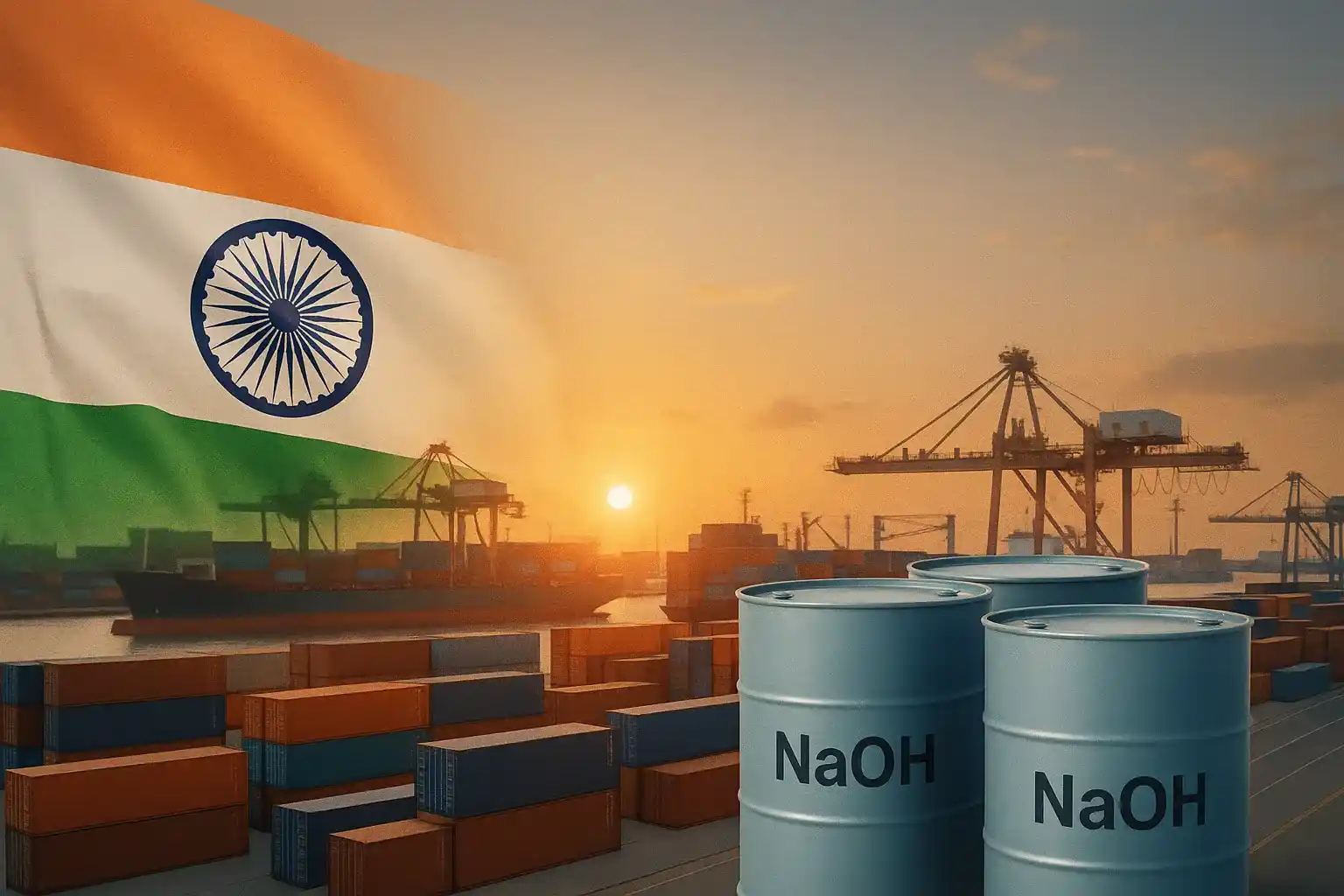Introduction: The Strategic Importance of Caustic Soda in India
India plays a pivotal role in the global caustic soda (NaOH) market due to its expansive industrial base in textiles, pulp & paper, aluminum, and soaps. As a fundamental alkali chemical, caustic soda is integral to over 30 major manufacturing sectors. In 2024, the Indian chemical market witnessed a growth of over 8%, with caustic soda being one of the key drivers, according to reports by the Indian Chemical Council.
The Indian government’s “Make in India” initiative has further pushed domestic production, prompting manufacturers to scale operations. Several chemical hubs such as Gujarat, Maharashtra, and Tamil Nadu have enhanced their chlor-alkali capacities to meet rising internal demand and create surplus for export.
However, despite its growing production capacity, India also imports caustic soda, albeit in lower volumes compared to exports. This dual dynamic—of exporting surplus while importing specific grades—makes India a unique player in the global caustic soda trade ecosystem.
In this article, we unpack the key export-import trends of caustic soda from India, explore regulatory influences, pricing mechanisms, and identify strategic opportunities for global traders and suppliers alike.
India's Caustic Soda Export Trends: Key Destinations and Drivers
India has consistently maintained a strong export footprint for caustic soda, particularly in the South Asian, Middle Eastern, and East African regions. According to Ministry of Commerce data, India's caustic soda exports crossed 120,000 metric tons in FY 2024, with primary destinations including Bangladesh, UAE, Nepal, and Kenya.
Export growth is largely driven by cost-competitive production, availability of raw brine and electricity, and strategic port infrastructure such as Mundra and Kandla. Major producers like Grasim Industries, GACL, and DCW Ltd. have secured long-term contracts with buyers in neighboring regions, enhancing India’s status as a reliable supplier.
Indian exporters also benefit from favorable trade agreements and export incentives under MEIS and RoDTEP schemes. These help keep Indian caustic soda competitively priced even against Chinese or Middle Eastern alternatives.
Additionally, the rising demand for caustic soda in African textile dyeing and Asian alumina refineries creates expanding export opportunities. According to the India Brand Equity Foundation (IBEF), exports are projected to grow another 10-12% YoY by 2026, with added capacity in Gujarat expected to come online by Q4 2025.
Import Patterns: Why India Still Imports Caustic Soda
While India is a net exporter, it still imports caustic soda under specific circumstances. Imports in 2024 totaled around 30,000 metric tons, primarily from Japan, South Korea, and Saudi Arabia, according to DGFT statistics.
These imports are mainly driven by regional supply shortages, specific purity grades, or specialized industry requirements such as electronic-grade caustic soda for semiconductor applications. Eastern India, with limited inland caustic capacity, sometimes finds it more economical to import via ports like Kolkata or Paradip.
Moreover, during plant maintenance shutdowns or unforeseen capacity shortages, Indian traders supplement demand through short-term import contracts. This is especially evident in the textile and detergent sectors, where continuity of supply is critical.
Global market forces, such as declining freight rates or temporary price drops in Gulf countries, also encourage opportunistic imports. For instance, when caustic soda prices dropped 5–7% in the Middle East during Q1 2024, Indian importers leveraged the gap to fill stockpiles.
Pricing Dynamics and Trade Regulations Affecting Caustic Soda
Caustic soda pricing in India is influenced by several factors: domestic production cost (primarily electricity and salt), international benchmark prices, and logistics expenses. In 2025, domestic spot prices ranged from INR 34–38/kg, with slight regional variations.
Trade regulations such as anti-dumping duties have a direct impact on import viability. India has imposed duties on Chinese caustic soda in the past to protect local manufacturers. Additionally, importers must comply with BIS (Bureau of Indian Standards) certification, especially for industrial chemicals entering the food and pharma sectors.
Exporters also navigate regulatory landscapes such as REACH compliance when dealing with European markets or GHS labeling when trading with ASEAN partners. Maintaining compliance is key to preserving global buyer trust and ensuring customs clearance efficiency.
Furthermore, the Energy Conservation Act amendments now push chemical manufacturers to reduce power consumption, which could slightly affect input costs—and consequently—caustic soda prices. According to CRISIL Research, we may witness marginal price increases in Q4 2025 due to these shifts.
Supply Chain and Logistics Impacting Trade Volumes
India’s extensive port network and chemical storage infrastructure make it a strategic caustic soda exporter. Key ports—Kandla, Mundra, Nhava Sheva, and Chennai—are equipped with bulk liquid handling terminals, ISO tank facilities, and road-rail connectivity.
Inland demand across states like Uttar Pradesh, Bihar, and Odisha is supported by rail-tanker logistics and bulk truck dispatches. However, bottlenecks such as high port congestion, rising domestic freight rates, and limited ISO tank availability have impacted turnaround times, especially during monsoon seasons.
Digital supply chain solutions are gaining traction in India’s chemical export sector. Platforms offering real-time inventory tracking, predictive shipment models, and customs automation are helping exporters reduce operational delays.
International traders seeking reliable Indian partners should prioritize suppliers with dedicated logistic contracts, multi-modal capabilities, and hazmat-certified packaging standards, ensuring consistent delivery performance across borders.
Conclusion: Future Forecast and Strategic Opportunities
India’s caustic soda trade shows strong promise for 2025 and beyond. With newer chlor-alkali plants under construction and rising global demand for aluminum, textiles, and industrial cleaners, export volumes are expected to grow steadily.
For importers, India remains a viable sourcing destination due to its cost efficiency, regulatory adherence, and production scale. However, staying informed on regulatory changes, freight cost fluctuations, and purity-grade requirements will be crucial.
B2B buyers and global traders should establish strategic partnerships with leading Indian chemical suppliers who offer not only high-quality products but also technical documentation, regulatory support, and agile delivery systems.
Companies like Chemtradeasia India are positioned to offer consistent caustic soda supply with a global footprint, competitive pricing, and customer-focused support. Connect with our sales team to explore long-term supply agreements and access detailed product specifications today.

Leave a Comment